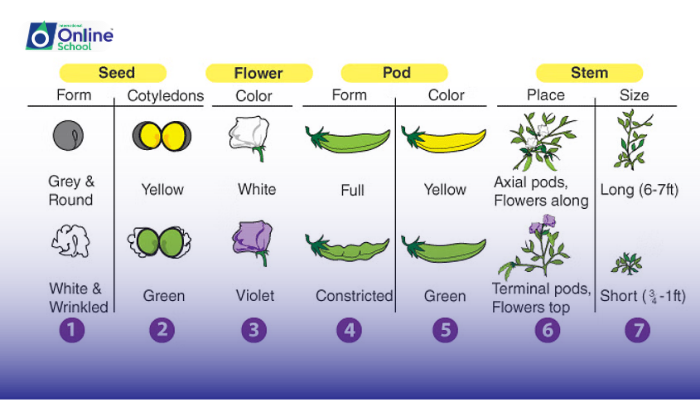
Learning Outcomes:
i. Define inheritance and its role in the continuity of life.
ii. Explain the principles of segregation and independent assortment as established by Gregor Mendel.
iii. Apply Mendel's laws to predict the inheritance patterns of traits in simple genetic crosses.
iv. Recognize the significance of Mendel's discoveries in understanding the transmission of traits across generations.
Introduction:
Have you ever looked at your family and wondered how you inherited your eye color, your height, or even your dimpled smile? The answer to this age-old question lies in the fascinating world of inheritance, where the secrets of life are passed from one generation to the next. In this lesson, we'll step into the shoes of Gregor Mendel, a pioneer who unraveled the mysteries of heredity, revealing the fundamental principles that govern the transmission of traits.
i. The Legacy of a Pea Patch: Mendel's Experiments
Imagine a humble pea patch, rows of green and yellow peas nestled in the sun. This was the stage where Gregor Mendel, a curious monk, conducted his groundbreaking experiments. He meticulously crossed pea plants with different traits, observing their offspring and recording the results. Through years of careful observation and analysis, Mendel discovered two key principles:
The Law of Segregation: This law states that each parent carries two copies of a gene for a particular trait, but only one copy is passed on to each offspring. Think of it like flipping a coin – each parent has a coin, heads or tails, and only one side gets passed on to their child. This explains why some offspring inherit a dominant trait like tallness from one parent, while others receive the recessive trait of shortness from the other.
The Law of Independent Assortment: This law states that the inheritance of one gene is independent of the inheritance of another. Imagine choosing two different colored marbles from a bag – the color you pick for one trait, like eye color, doesn't influence the color you pick for another, like hair color. This allows for a vast array of possible combinations of traits in offspring, creating the unique diversity we see in families.
ii. From Peas to Possibilities: Applying Mendel's Laws
Mendel's laws weren't just about pea plants; they unlocked a universal language for understanding inheritance in all living things. By applying these principles, we can:
Predict the probability of inheriting specific traits in offspring.
Explain the occurrence of dominant and recessive traits within families.
Understand the basis of genetic disorders and potential treatments.
Appreciate the vast diversity of life that arises from the interplay of genes across generations.
Gregor Mendel's laws stand as a testament to the power of curiosity and meticulous observation. They opened the door to a deeper understanding of the mechanisms that shape life, paving the way for advancements in genetics, medicine, and our overall understanding of ourselves and the world around us. By appreciating these fundamental principles, we gain a deeper appreciation for the intricate dance of inheritance, the legacy that connects us to our ancestors and shapes the future generations to come. Remember, the story of heredity is not just about peas and genes; it's about the incredible journey of life, where every trait, every characteristic, whispers a tale of generations past and possibilities yet to be discovered.